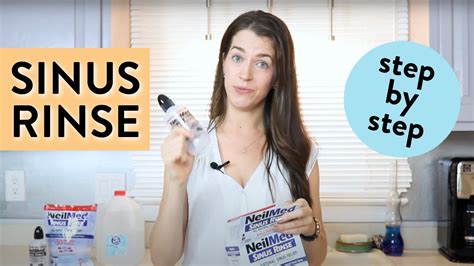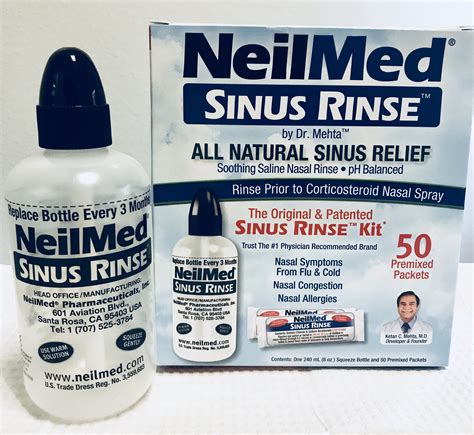The importance of sinus health cannot be overstated, as it plays a crucial role in our overall well-being. Sinus issues, such as congestion, infections, and allergies, can significantly impact our quality of life, causing discomfort, pain, and breathing difficulties. One effective way to maintain healthy sinuses is through sinus rinsing, a practice that involves flushing out the nasal passages with a saline solution. This technique has been shown to provide numerous benefits, including reducing congestion, alleviating allergy symptoms, and promoting healing. By incorporating sinus rinsing into our daily routine, we can take a proactive approach to managing our sinus health and preventing potential issues.
Sinus rinsing is a simple, non-invasive procedure that can be performed at home with a neti pot or a squeeze bottle. The process involves filling the device with a saline solution, which is then poured or squeezed into one nostril and allowed to flow out the other. This gentle flow of liquid helps to remove debris, mucus, and allergens from the nasal passages, promoting healthy drainage and reducing congestion. Regular sinus rinsing can also help to reduce the risk of sinus infections, as it removes bacteria and other microorganisms that can cause illness. Furthermore, sinus rinsing can be beneficial for individuals who suffer from allergies, as it helps to remove allergens and reduce inflammation.
For individuals who are new to sinus rinsing, it may seem intimidating or uncomfortable at first. However, with practice and patience, it can become a simple and effective way to maintain healthy sinuses. It is essential to follow proper techniques and guidelines to ensure safe and effective sinus rinsing. This includes using sterile or distilled water, avoiding contaminated water sources, and properly cleaning and maintaining the rinsing device. By following these guidelines and incorporating sinus rinsing into our daily routine, we can take a proactive approach to managing our sinus health and promoting overall well-being.
Benefits of Sinus Rinsing
The benefits of sinus rinsing are numerous and well-documented. Regular sinus rinsing can help to reduce congestion, alleviate allergy symptoms, and promote healing. It can also help to reduce the risk of sinus infections, as it removes bacteria and other microorganisms that can cause illness. Additionally, sinus rinsing can help to improve breathing, reduce facial pain and pressure, and promote overall sinus health. By incorporating sinus rinsing into our daily routine, we can take a proactive approach to managing our sinus health and preventing potential issues. Some of the key benefits of sinus rinsing include:
* Reducing congestion and alleviating allergy symptoms
* Promoting healing and reducing the risk of sinus infections
* Improving breathing and reducing facial pain and pressure
* Removing debris, mucus, and allergens from the nasal passages
* Promoting healthy drainage and reducing inflammation
How to Perform Sinus Rinsing

Performing sinus rinsing is a relatively simple process that can be done at home with a neti pot or a squeeze bottle. The first step is to prepare the saline solution, which can be made by mixing salt and baking soda with warm water. It is essential to use sterile or distilled water to avoid contaminating the solution. Once the solution is prepared, fill the neti pot or squeeze bottle and stand over a sink. Tilt your head to one side and gently pour the solution into the top nostril, allowing it to flow out the bottom nostril. Repeat the process on the other side, making sure to breathe through your mouth and avoid swallowing the solution. Some key tips to keep in mind when performing sinus rinsing include:
* Using sterile or distilled water to avoid contamination
* Avoiding contaminated water sources, such as tap water
* Properly cleaning and maintaining the rinsing device
* Using a saline solution that is isotonic, meaning it has the same concentration of salt as the body
* Avoiding sinus rinsing if you have a cold, flu, or other respiratory infection
Choosing the Right Rinsing Device
When it comes to choosing the right rinsing device, there are several options available. Neti pots and squeeze bottles are two of the most common devices used for sinus rinsing. Neti pots are small, teapot-like devices that are filled with a saline solution and poured into the nostrils. Squeeze bottles, on the other hand, are larger devices that are filled with a saline solution and squeezed into the nostrils. Both devices can be effective for sinus rinsing, but it ultimately comes down to personal preference. Some key factors to consider when choosing a rinsing device include:
* Ease of use and comfort
* Effectiveness in removing debris and mucus
* Durability and maintenance requirements
* Cost and availability
* Sterility and safety features
Tips for Effective Sinus Rinsing
To get the most out of sinus rinsing, it is essential to follow some key tips and guidelines. First, make sure to use sterile or distilled water to avoid contaminating the solution. Next, avoid using tap water, as it can contain bacteria and other microorganisms that can cause illness. It is also essential to properly clean and maintain the rinsing device, as well as to use a saline solution that is isotonic. Additionally, avoid sinus rinsing if you have a cold, flu, or other respiratory infection, as it can push the infection further into the sinuses. Some other key tips for effective sinus rinsing include:
* Rinsing both nostrils to ensure thorough cleaning
* Using a warm saline solution to help loosen mucus
* Avoiding bending or straining during the rinsing process
* Breathing through your mouth and avoiding swallowing the solution
* Rinsing regularly to maintain healthy sinuses and prevent congestion
Common Mistakes to Avoid
When it comes to sinus rinsing, there are several common mistakes to avoid. One of the most significant mistakes is using contaminated water, which can introduce bacteria and other microorganisms into the sinuses. Another mistake is not properly cleaning and maintaining the rinsing device, which can lead to the growth of bacteria and other microorganisms. Additionally, using a saline solution that is not isotonic can cause discomfort and irritation. Some other common mistakes to avoid include:
* Rinsing too forcefully, which can cause discomfort and irritation
* Not rinsing both nostrils, which can lead to incomplete cleaning
* Rinsing with cold water, which can cause discomfort and reduce effectiveness
* Not following proper technique, which can lead to ineffective rinsing
Conclusion and Next Steps
In conclusion, sinus rinsing is a simple, effective, and non-invasive way to maintain healthy sinuses and prevent potential issues. By following proper techniques and guidelines, individuals can take a proactive approach to managing their sinus health and promoting overall well-being. Whether you are looking to alleviate allergy symptoms, reduce congestion, or promote healing, sinus rinsing is an excellent addition to your daily routine. To get started, consider investing in a neti pot or squeeze bottle and following the tips and guidelines outlined in this article. With regular practice and patience, you can experience the numerous benefits of sinus rinsing and take control of your sinus health.
As you continue on your journey to healthy sinuses, we invite you to share your experiences, ask questions, and seek guidance from our community. Whether you are a seasoned sinus rinsing enthusiast or just starting out, we encourage you to join the conversation and explore the many benefits of this simple yet effective technique. By working together and sharing our knowledge, we can promote healthy sinuses and improve our overall quality of life.
What is sinus rinsing and how does it work?
+
Sinus rinsing is a technique that involves flushing out the nasal passages with a saline solution to remove debris, mucus, and allergens. It works by gently flowing the solution through the nostrils, promoting healthy drainage and reducing congestion.
What are the benefits of sinus rinsing?
+
The benefits of sinus rinsing include reducing congestion, alleviating allergy symptoms, promoting healing, and improving breathing. It can also help to reduce the risk of sinus infections and promote overall sinus health.
How often should I perform sinus rinsing?
+
The frequency of sinus rinsing depends on individual needs and preferences. Some people may find it beneficial to rinse daily, while others may prefer to rinse a few times a week. It is essential to listen to your body and adjust your rinsing schedule accordingly.






